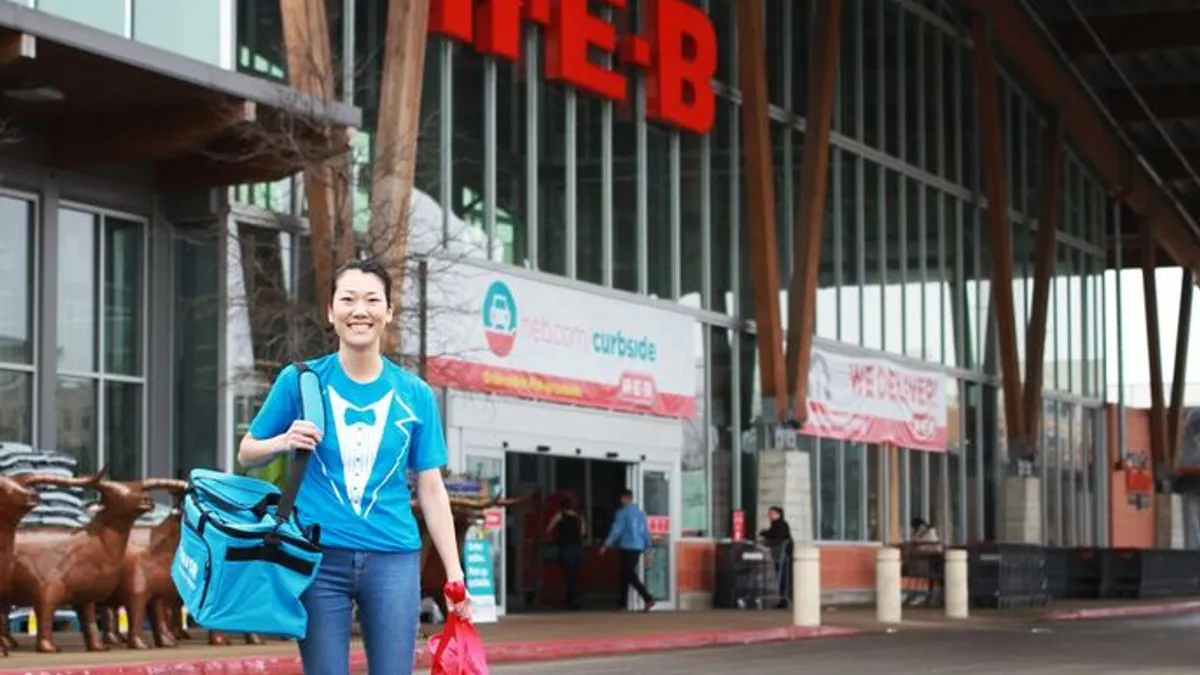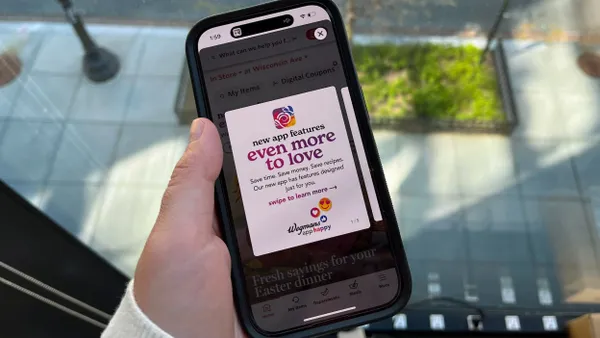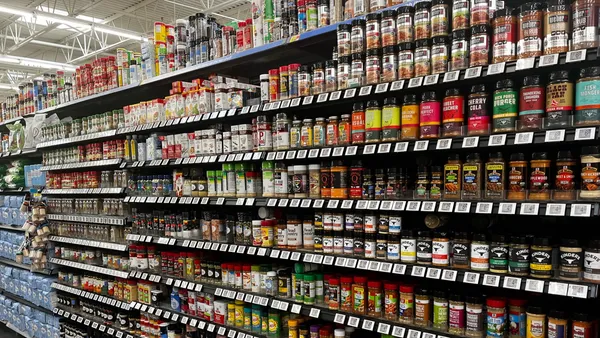Dive Brief:
- Texas-based H-E-B plans to open a new, 81,000-square-foot digital headquarters in Austin, according to news reports. The facility will be located in a renovated warehouse and will be completed next spring, according to the company.
- The headquarters will house the company’s digital team alongside the team from Favor, an on-demand mobile delivery company H-E-B acquired in February.
- “This state-of-the-art space will be a hub for creativity and innovation as we continue to develop the ultimate digital experience for our customers,” Jag Bath, H-E-B's chief digital officer and Favor CEO, said in a statement. “Bringing H-E-B and Favor closer together will allow us to promote collaboration between our two companies as we strengthen our commitment to building out H-E-B’s omnichannel services.”
Dive Insight:
H-E-B’s headquarters plan comes on the heels of a number of other digital initiatives taken by the company, including a newly created chief digital officer position. Having a space dedicated entirely to digital innovation should help the company further facilitate and streamline more initiatives while leveraging the startup culture and nimbleness of the Favor team.
Perhaps audaciously, the company is opening these headquarters in Amazon’s Whole Foods’ neighborhood, which could in part explain the impetus behind its creation. Amazon’s jump into the grocery category last year was a big wakeup call for traditional grocers who don't have the same resources and approach to digital innovation.
But Amazon and Whole Foods are hardly the only threats in the Lone Star State. Target has rolled out its same-day service through newly acquired Shipt, Kroger has beefed up its store count in Houston and Dallas, and has rolled out its ClickList service to stores in top markets. And Walmart, which has nearly 600 outlets in Texas, has aggressively rolled out store pickup, and sees several hundred orders a day come in from its Dallas locations. Aldi, Albertsons and Safeway are also making a digital dent in the Texas market.
In other words, it’s do or die time and H-E-B is doing quite a bit to keep up the pace in the race for convenience-seeking consumers. After its Favor acquisition, for example, H-E-B ramped up its home delivery and curbside pickup services and started piloting a self-checkout mobile app. Now, the company will be in an even better position simply by having a digital hub filled with “several hundred” workers who are focused on moving the company forward in this space. Having such a dedicated digital innovation facility is something few other grocers have done, but with accelerating demands, that could change.
Ahold Delhaize recently invested in a new Artificial Intelligence for Retail Lab, but that venture is focused on how AI can be used to “better serve the interests of customers.” Kroger has partnered with the University of Cincinnati to develop the “future of the grocery industry,” and though that lab is similar to H-E-B’s, Kroger will simultaneously focus on giving college students an opportunity to develop their skill sets.
As more players jump into the grocery category, and competition tightens up from every angle, one of the few ways left to grow is nontraditionally. Though an initiative like this is a big (and unproven) investment, grocers like H-E-B are betting on a strong return in the long run. And for good reason: online grocery sales are expected to grow 13% per year over the next five years.












